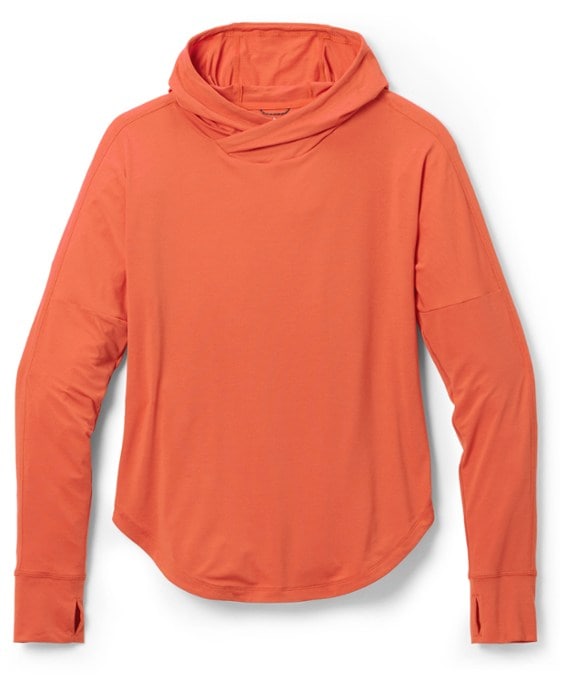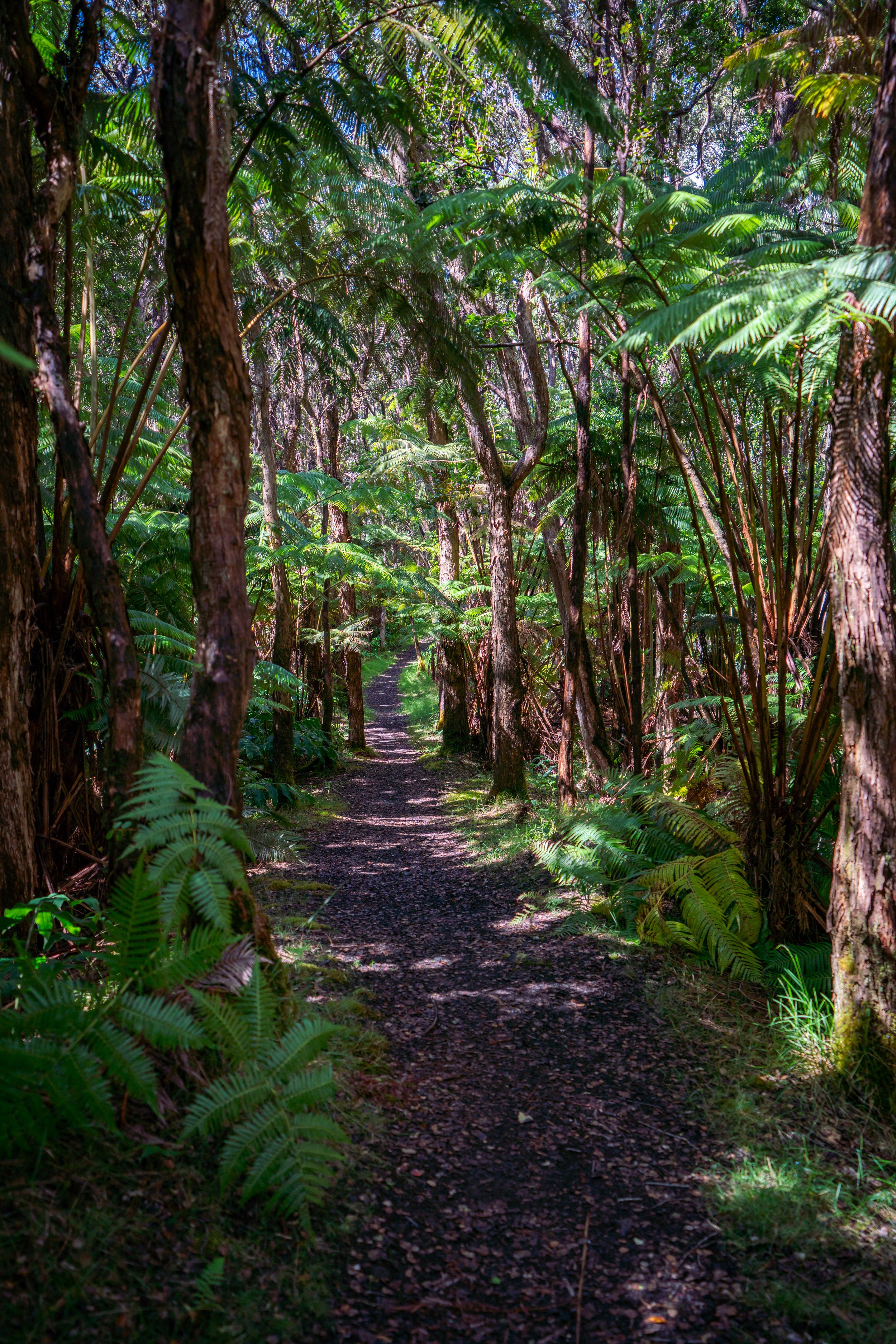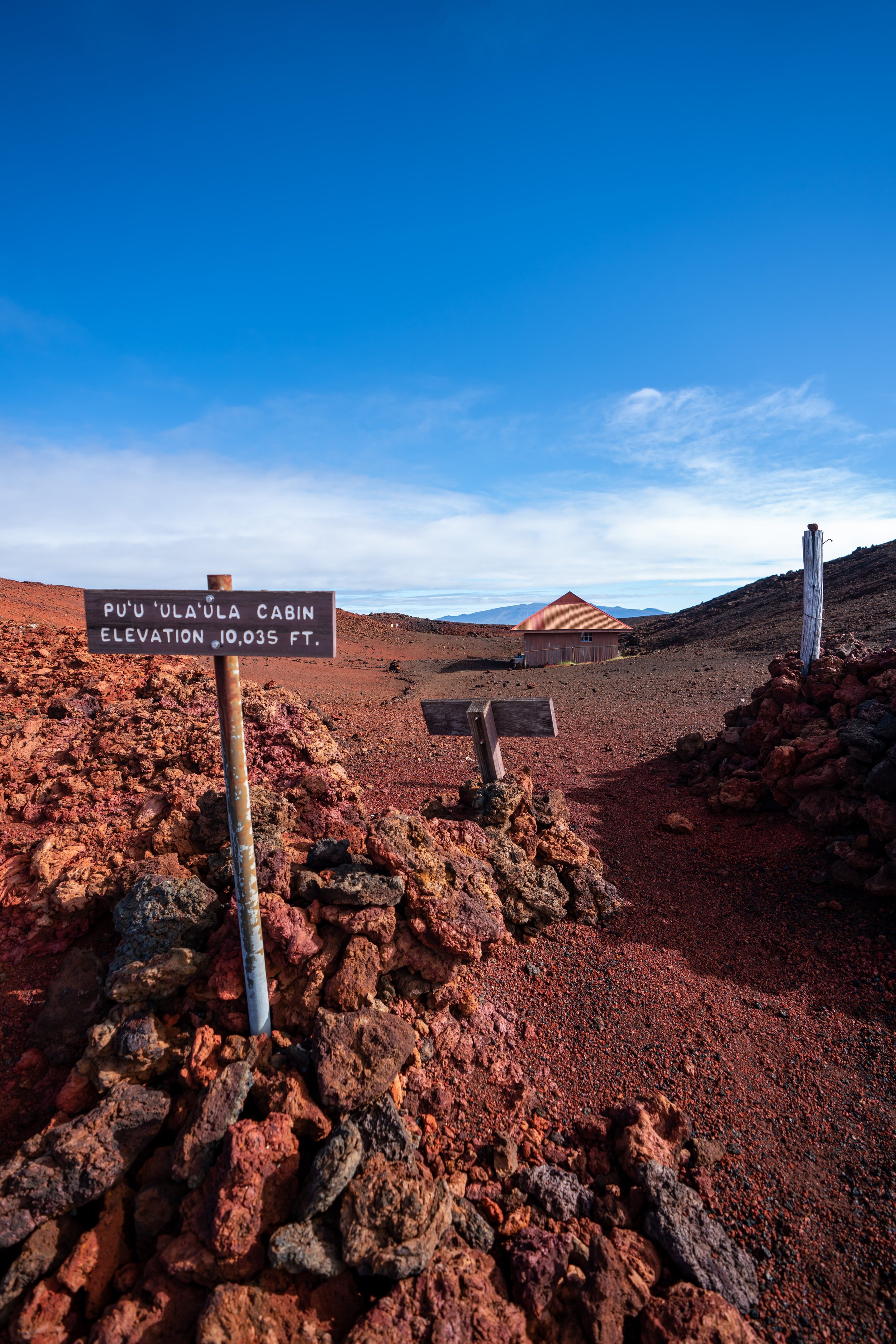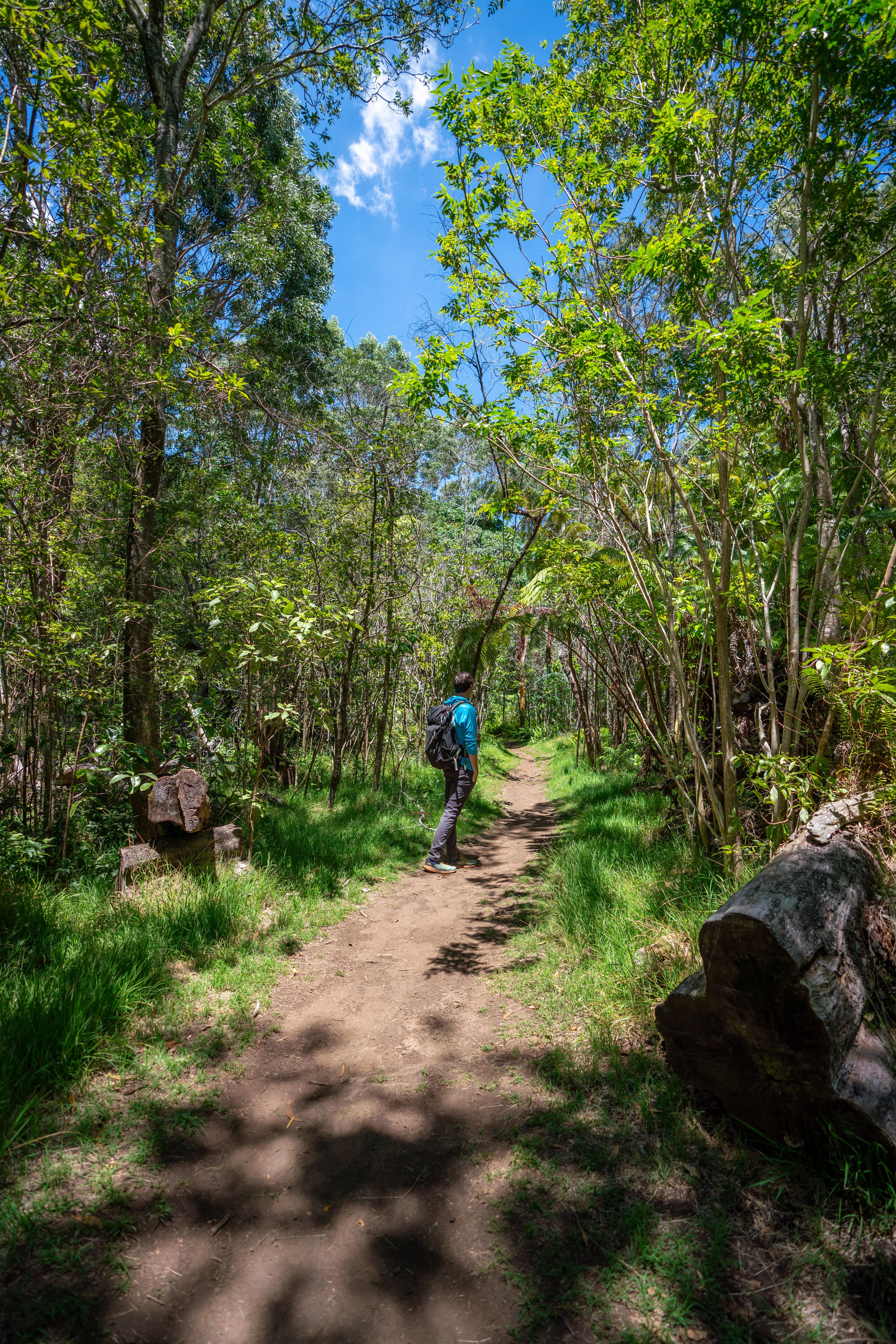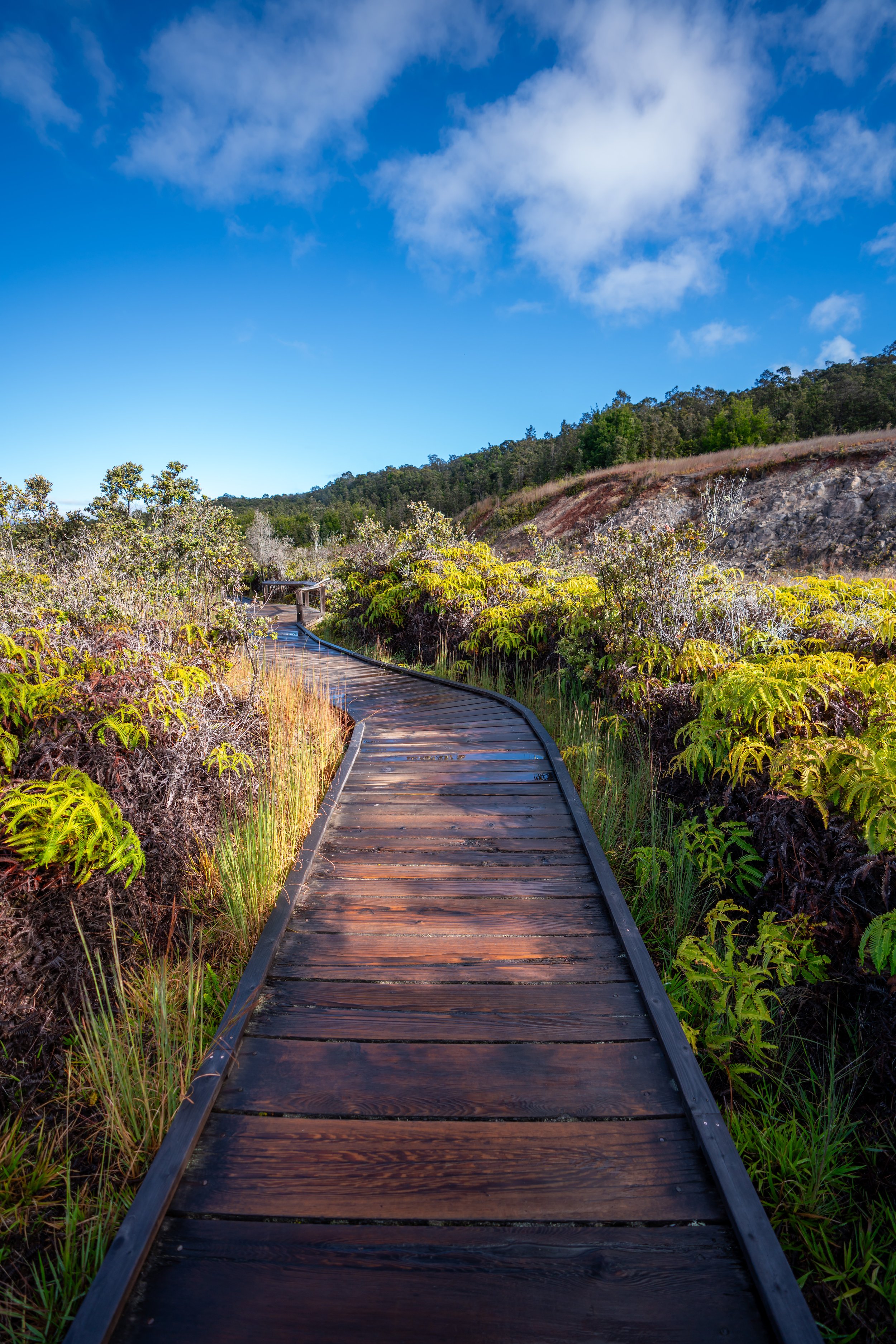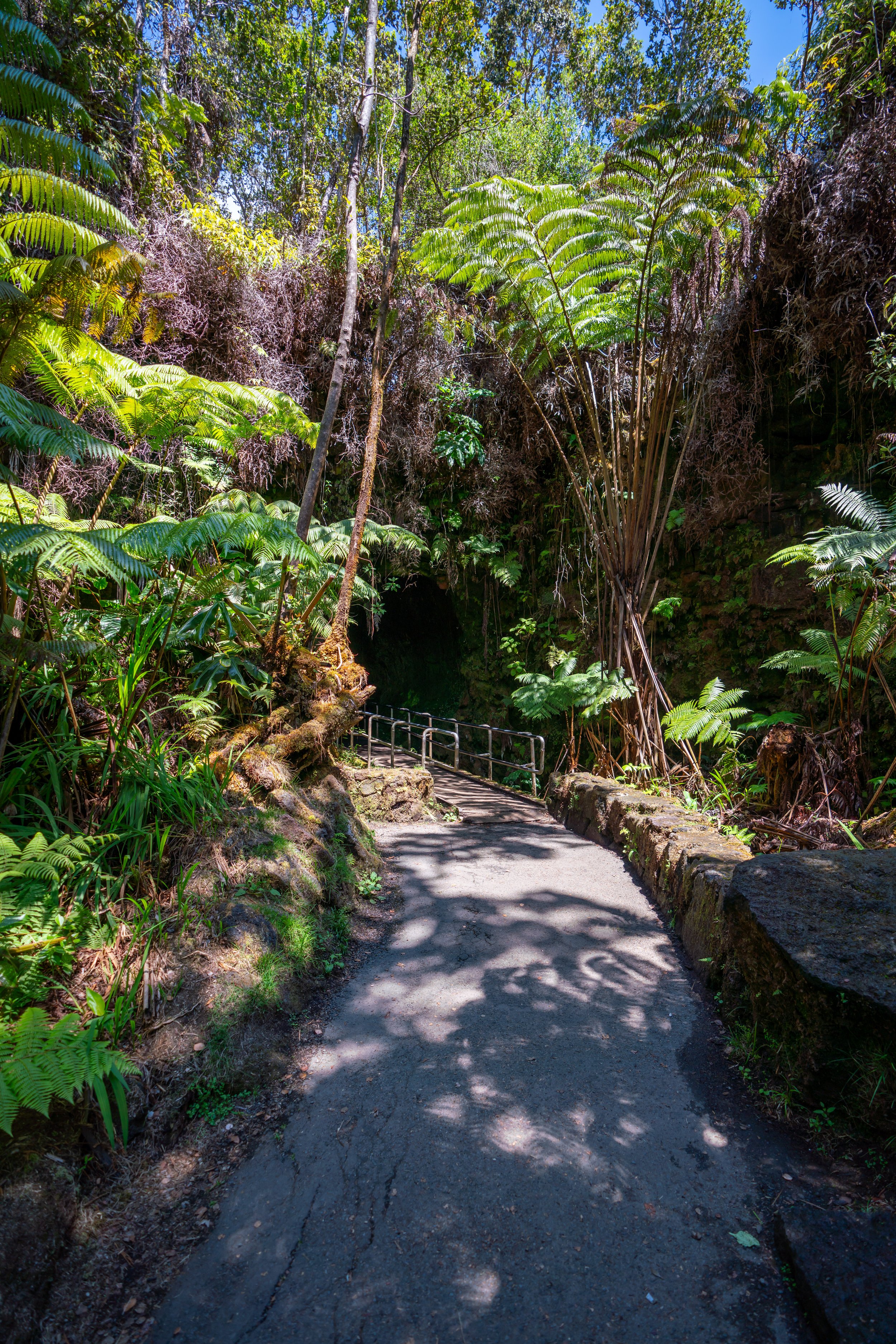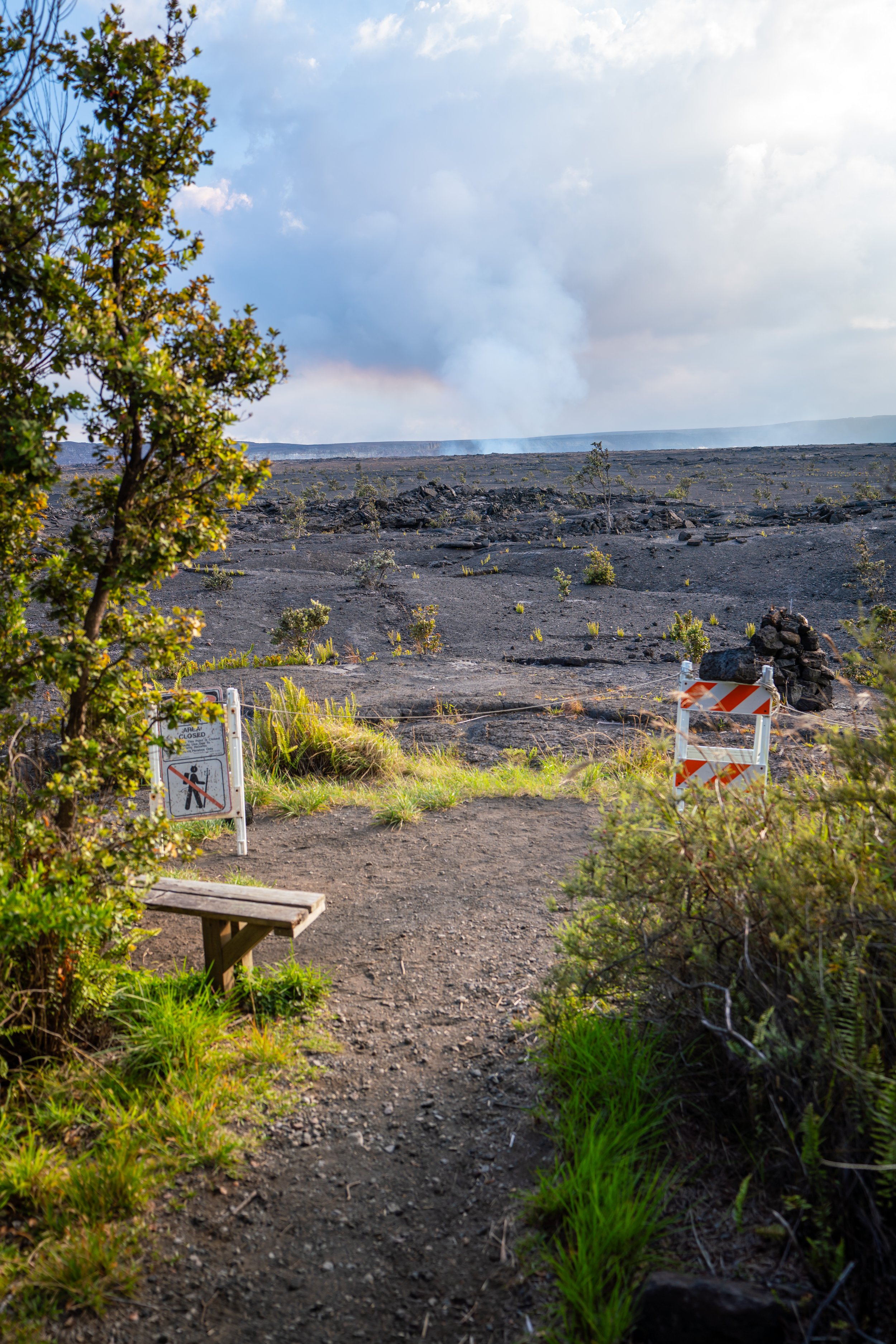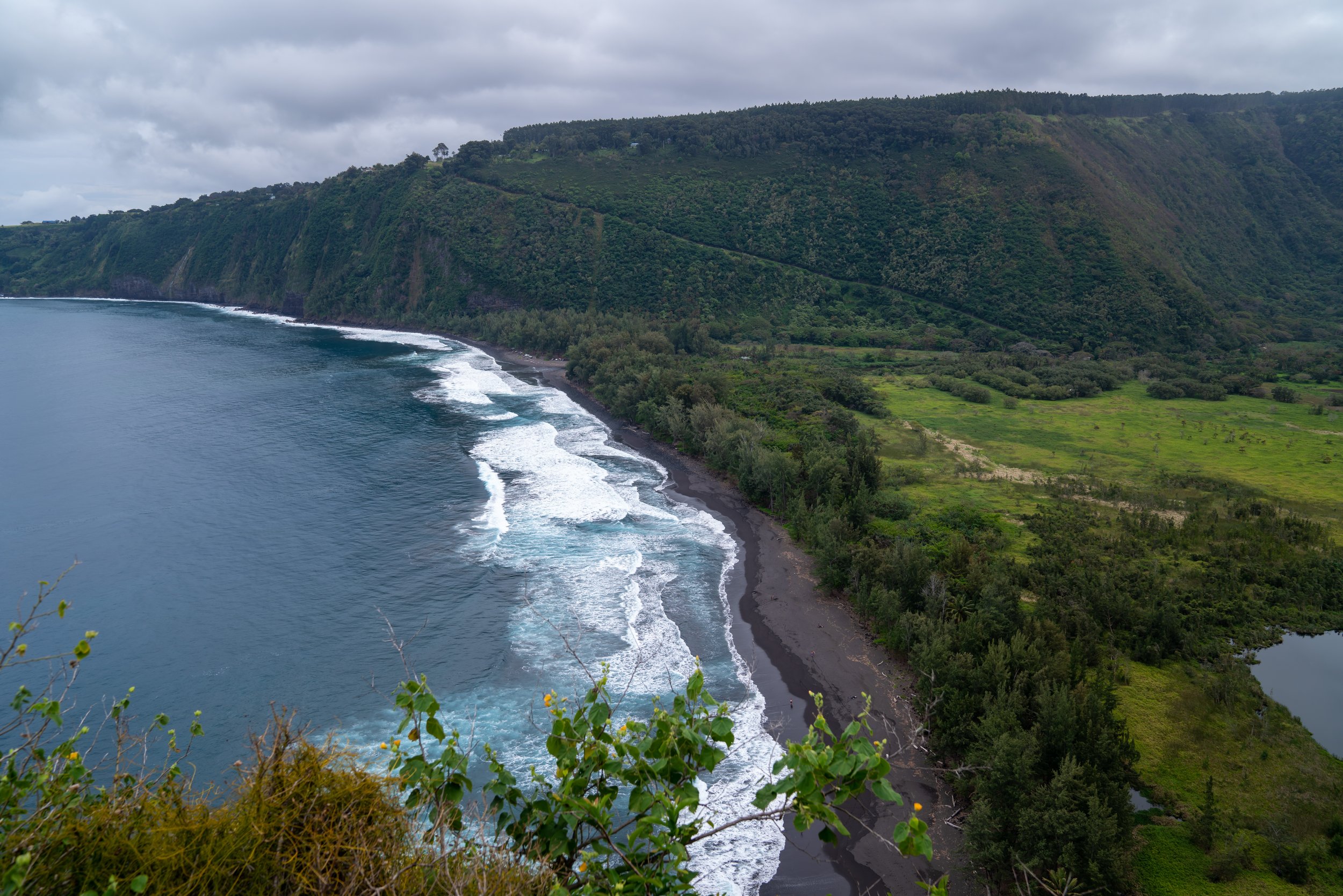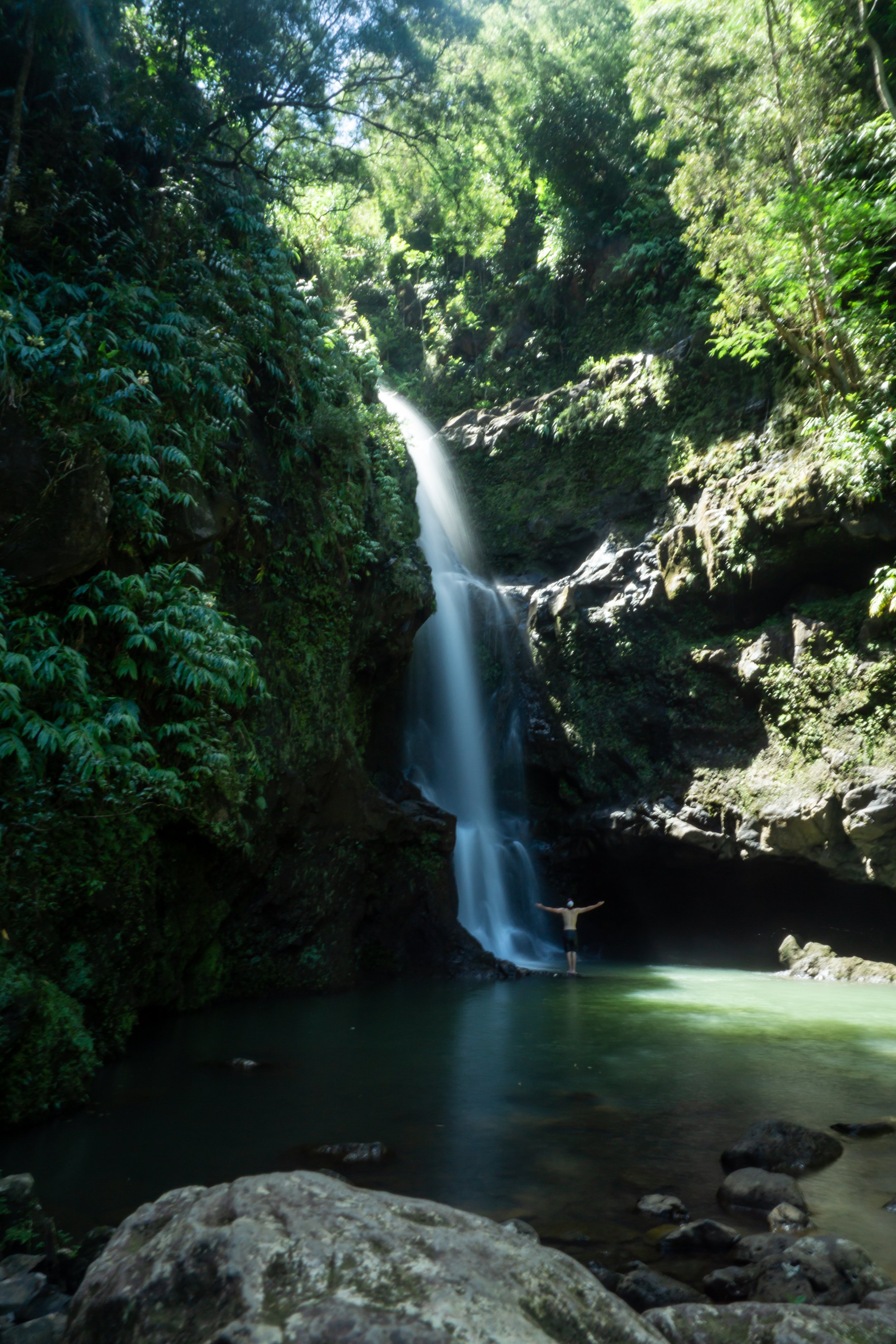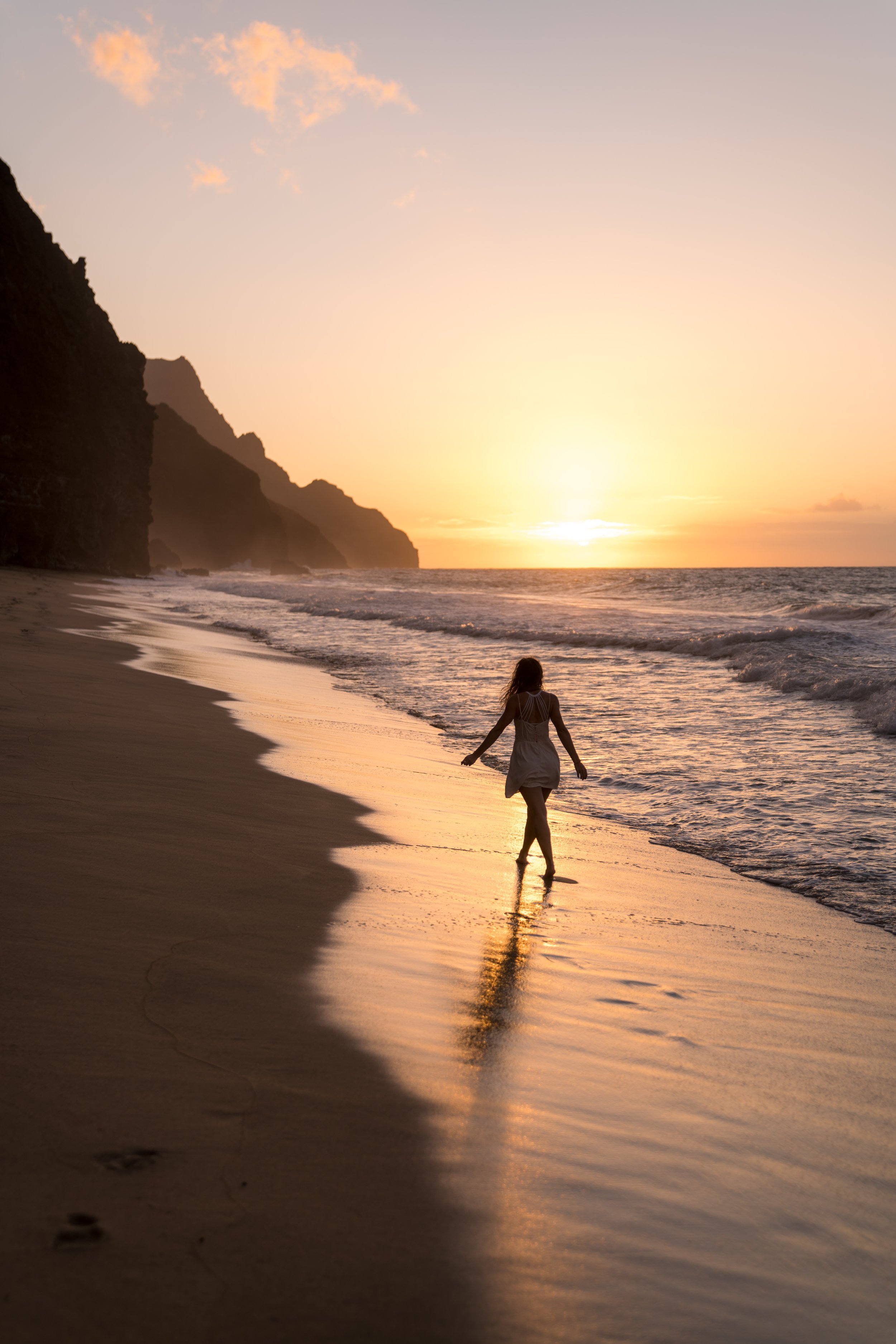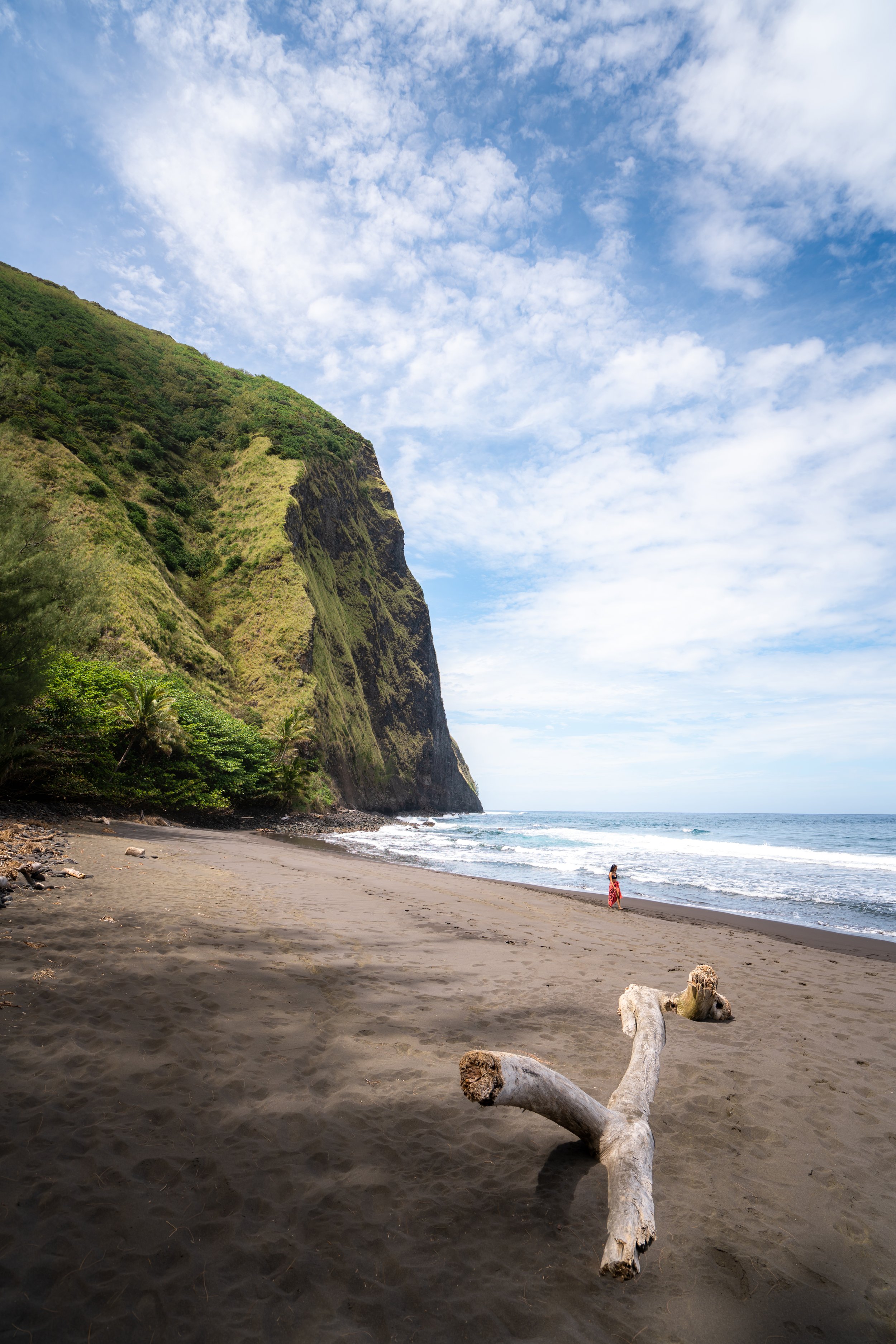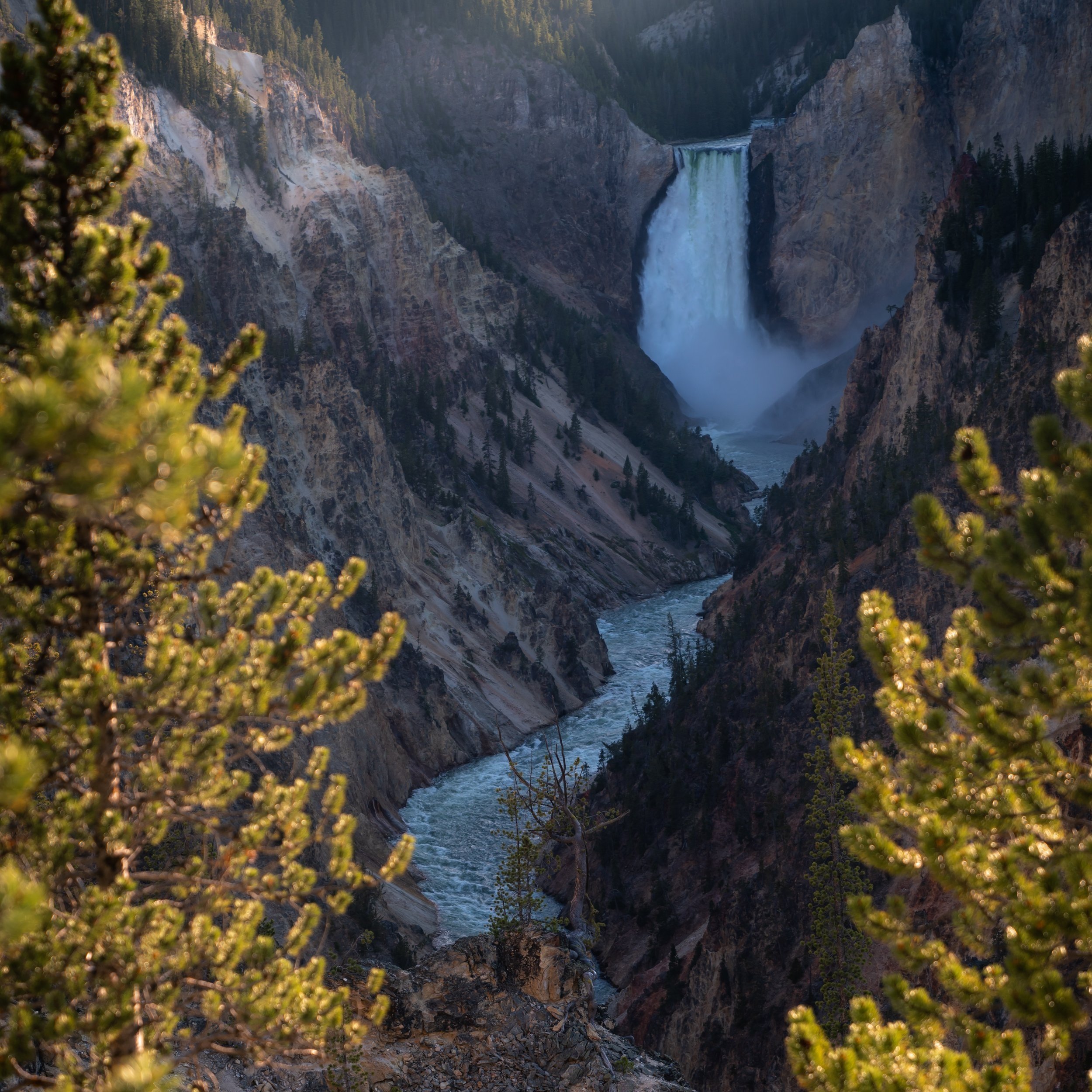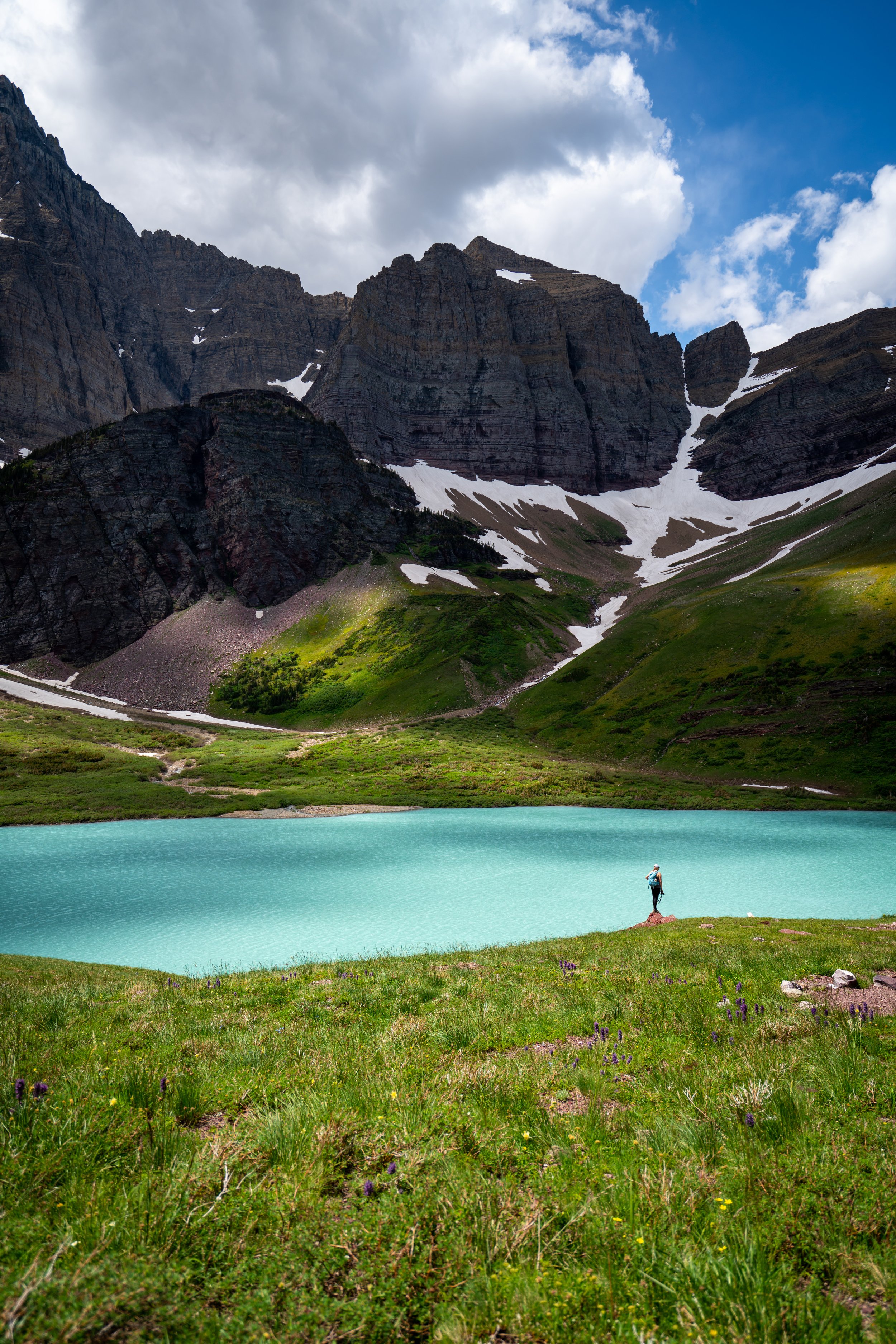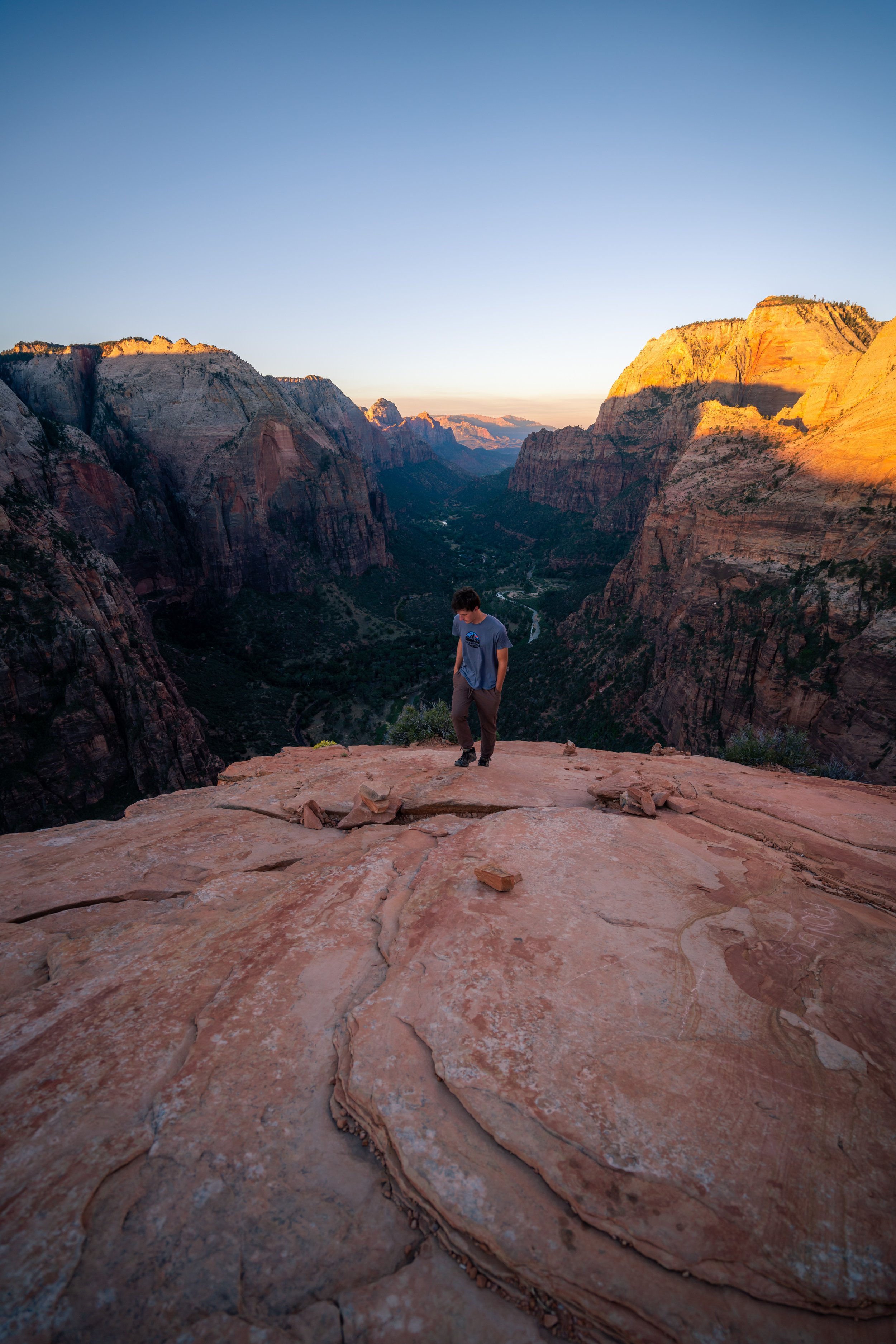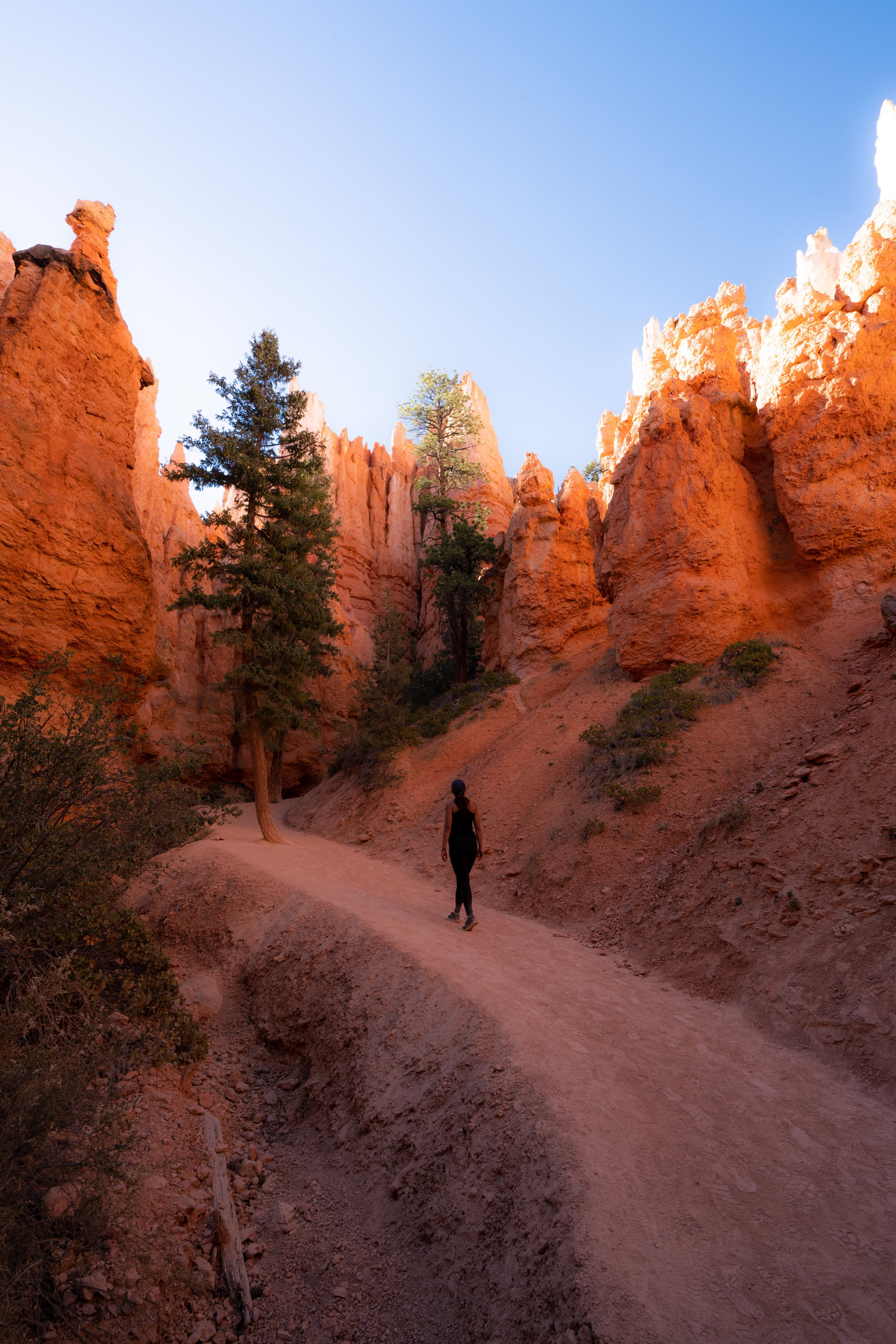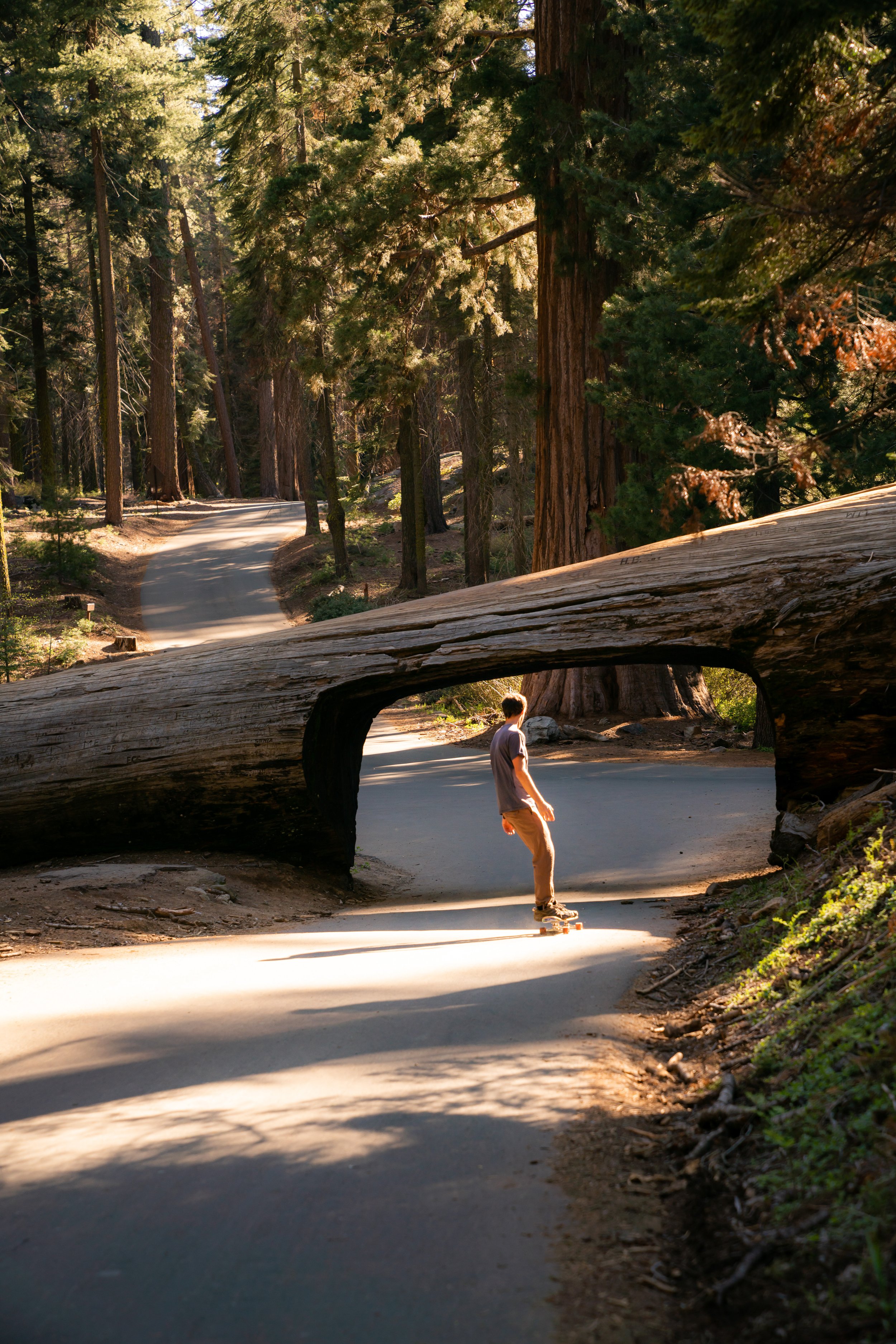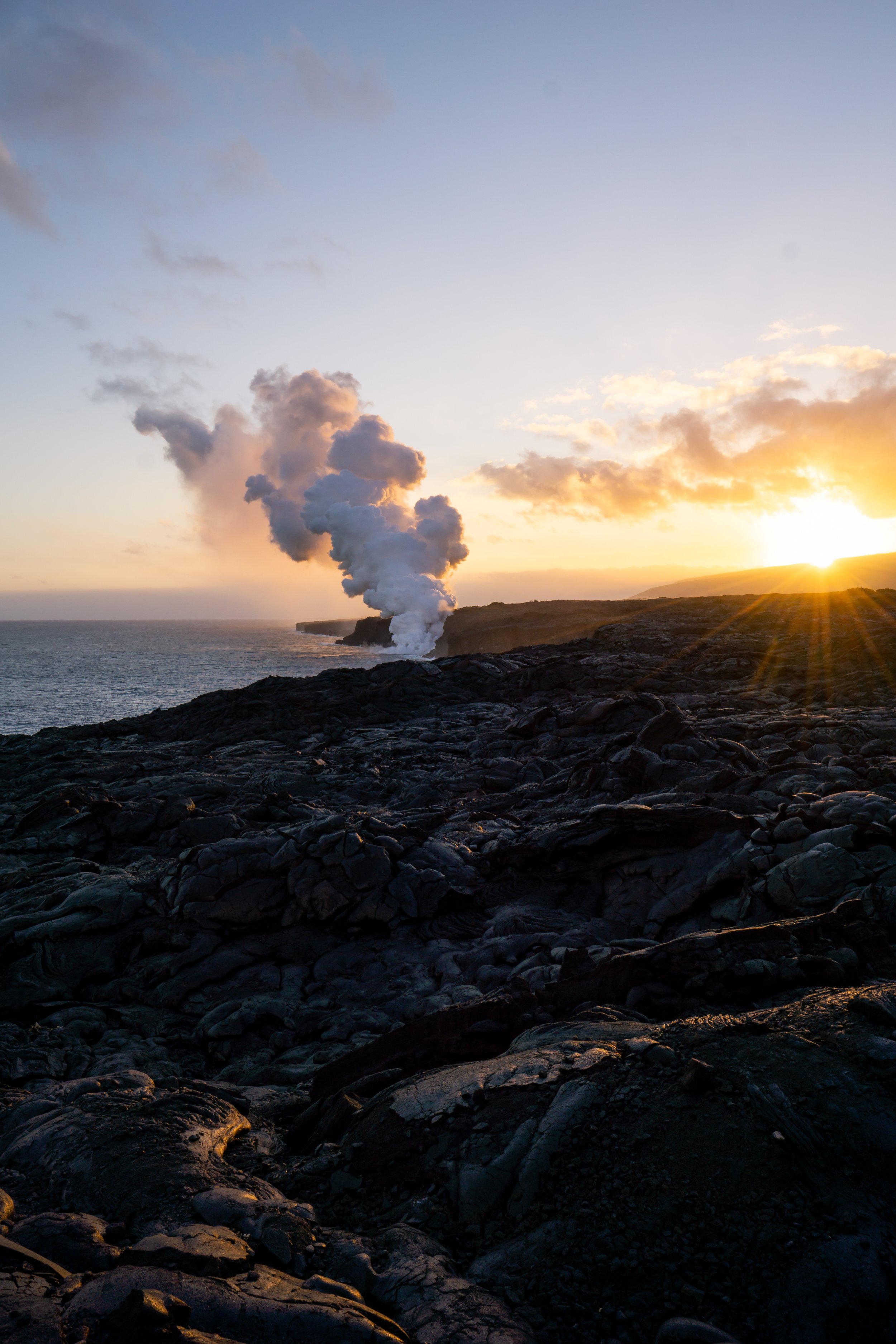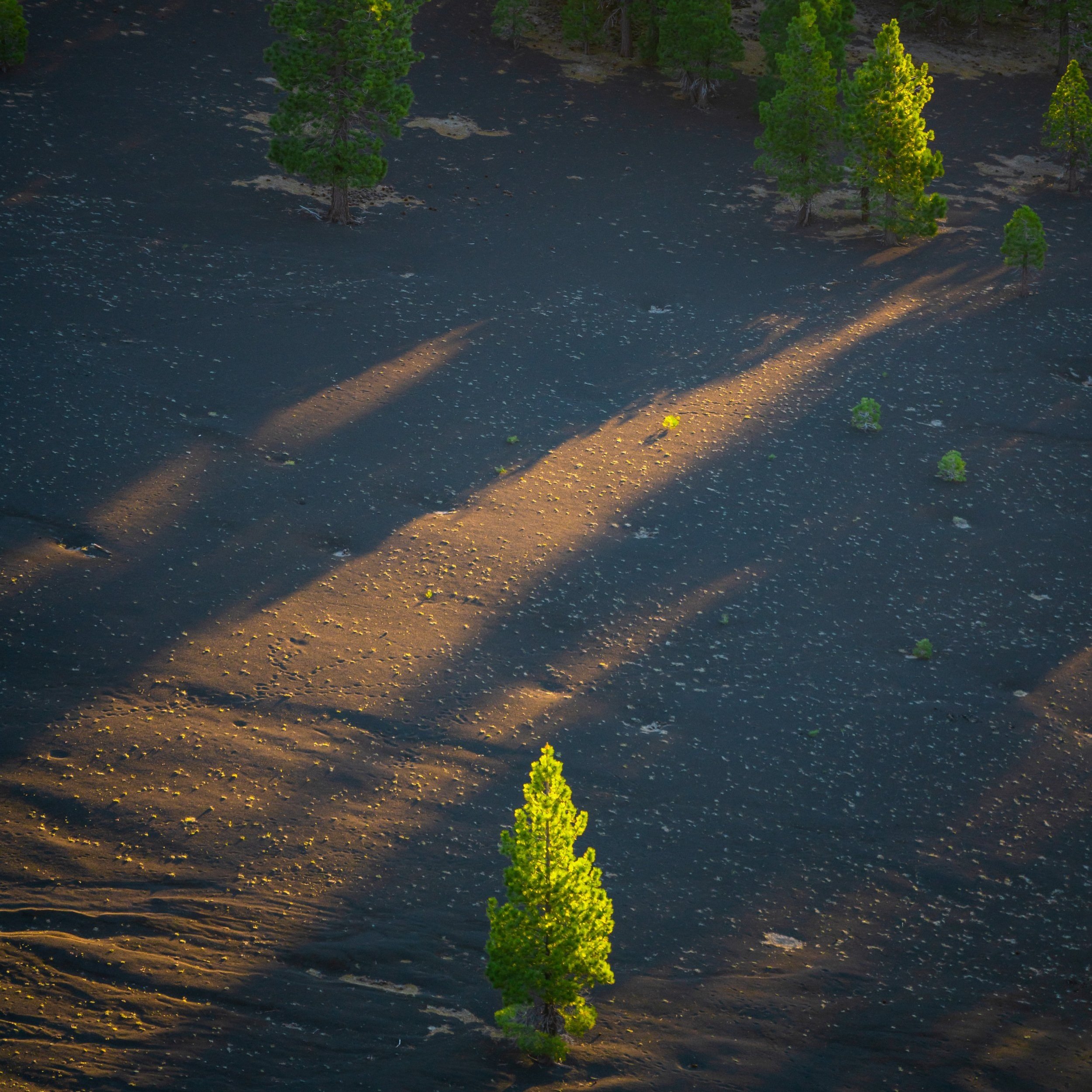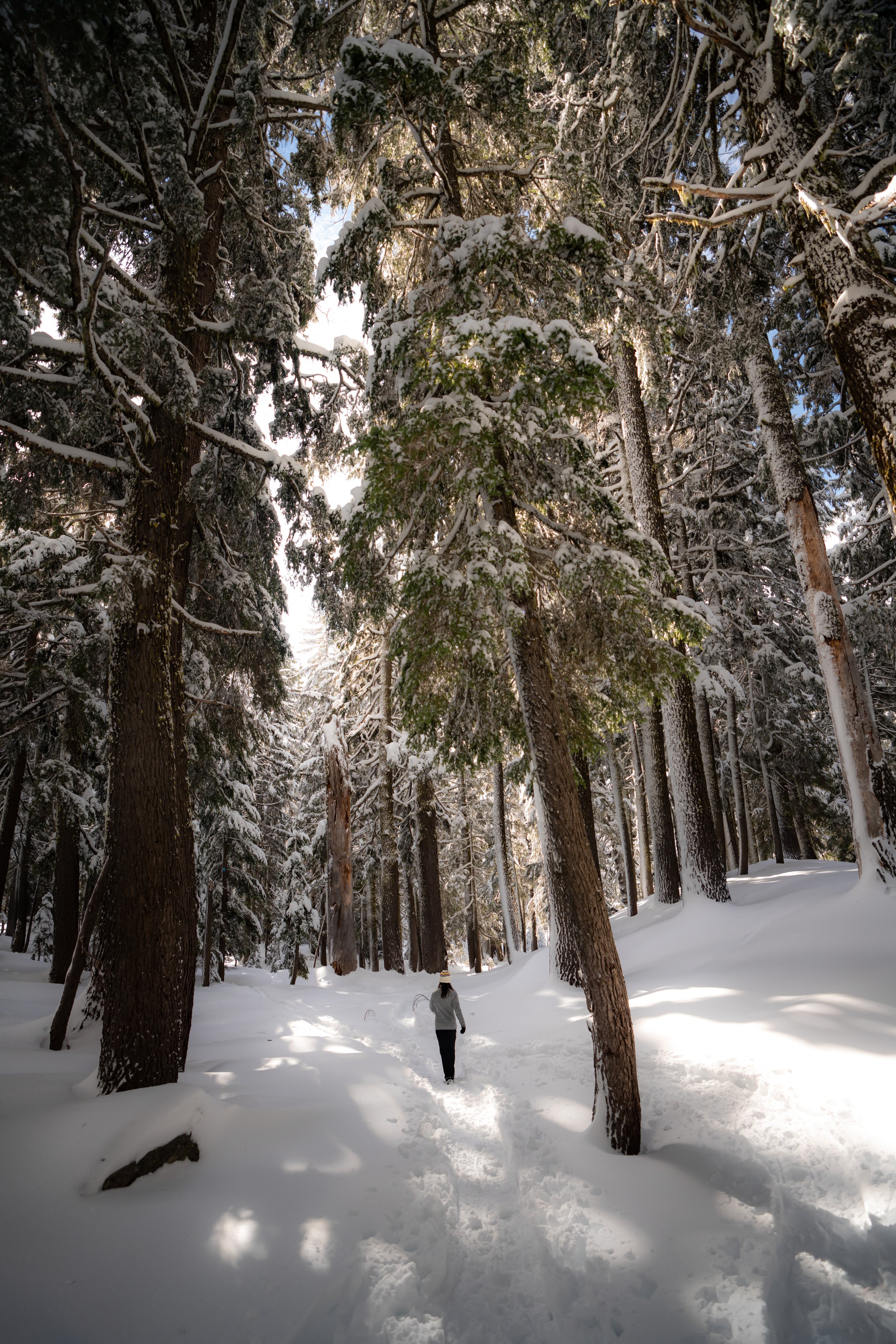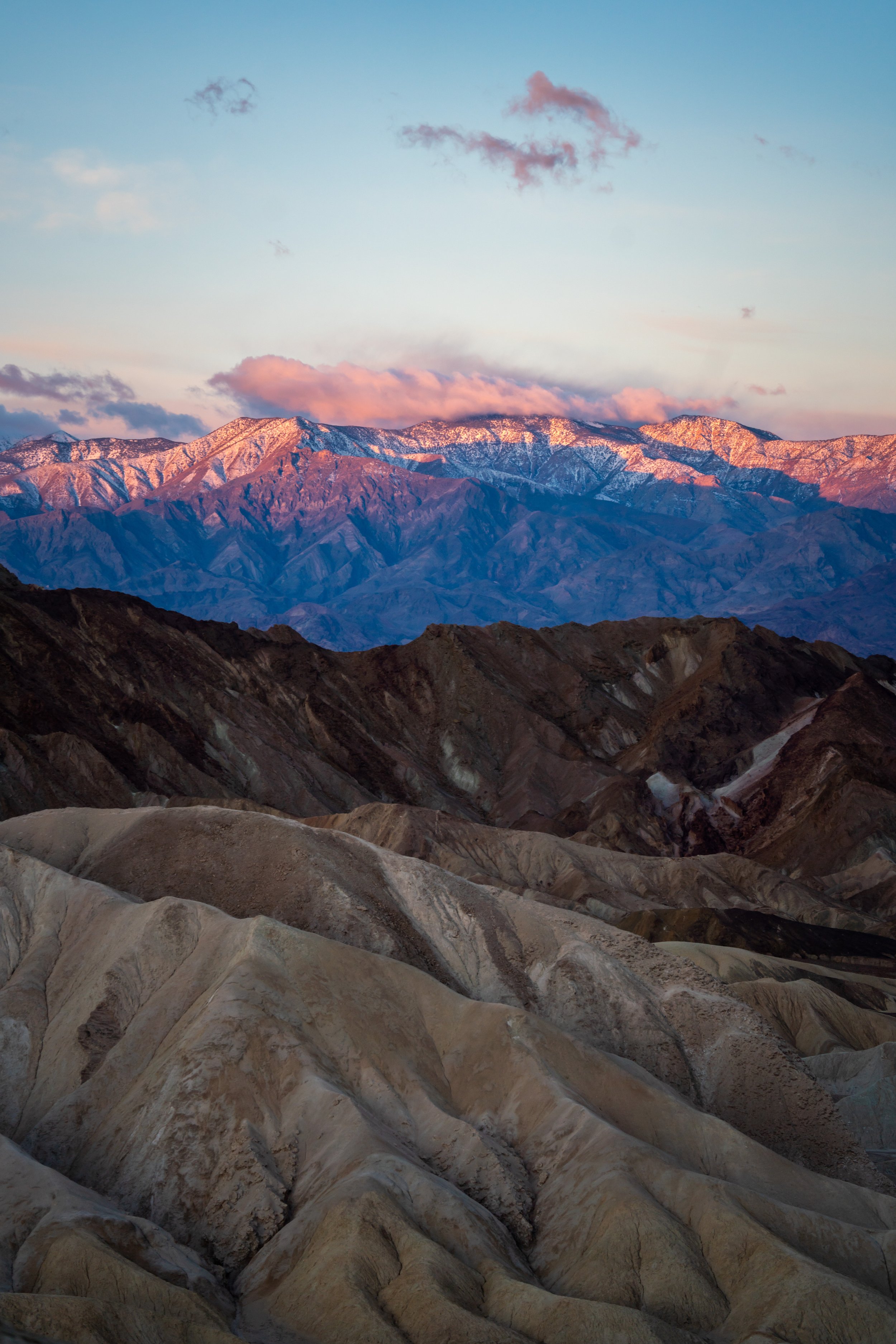Hiking the Kīlauea Iki Trail in Hawaiʻi Volcanoes National Park
Distance: 3.4 miles / 5.5 km
The Kīlauea Iki Trail in Hawaiʻi Volcanoes National Park is arguably the best all-around day hike in the Puna District near the Kīlauea Caldera, and I say this because the trail offers so much diversity in just one relatively short loop!
From the Crater Rim and down the east switchbacks, the Kīlauea Iki Trail descends through one of the lushest rainforests on the the Big Island, but this all abruptly ends once at the bottom of the Kīlauea Iki Crater.
It is here that the expansive landscape at the bottom of Kīlauea Iki opens up almost instantly with 360º views, where the Kīlauea Iki Trail traverses through the heart of a mostly barren, dry volcanic landscape, which at times, volcanic steam can be seen rising from the crater floor!
Finally, on the far side of Kīlauea Iki, the trail ascends back up to the rainforest before looping back to the beginning on the Crater Rim Trail.
Kīlauea Iki Trailhead Parking
Parking for the Kīlauea Iki Trail is located at either the Kīlauea Iki Overlook, or the Nāhuku Lava Tube.
Personally, I recommend parking at the Kīlauea Iki Overlook because it’s typically an easier parking lot to find a spot, as the Nāhuku Lava Tube tends to be one of the busier trailheads in all of Hawaiʻi Volcanoes National Park.
Google Maps Directions: Kīlauea Iki Overlook / Nāhuku (Thurston Lava Tube)
My Hawaiʻi Hiking Checklist
Osprey 3L Water Bladder - The Osprey 3L water bladder is the most universal hiking and backpacking water bladder on the market, and it’s my go-to because of the slide-off seal that allows it to be quickly filled from the top. Additionally, individual parts are easily replaceable, such as the bite valve.
Blister / Heel Protectors - I swear by these cheap, amazing heel protectors to prevent blisters for nearly every kind of hiking and backpacking that I do!
Black Diamond Headlamp - Personally, I recommend the Black Diamond Storm because it is one of the brightest, lightest, and longest-lasting headlamps on the market—and trust me, the weight-to-battery-life ratio really does matter!
Hiking / Trail Running Shoes - Depending on the type of trail, I prefer to use either the Keen Targhee for longer, more rugged hiking or the HOKA Zinal Trail-Running Shoe for lighter, less intense trails. In either case, both have been amazing to me for many years across countless environments, and both can be found in men’s and women’s sizes. - (Men’s Keen / Women’s Keen) (Men’s HOKA / Women’s HOKA)
Waterproof Rain Shell - You never know when it may rain, and I’ve learned over the years that a rain shell is far better than a rain jacket. By this, I mean that it’s best to have something that the water will roll right off of, which is why I recommend the Patagonia Torrentshell 3L available in both men’s and women’s sizes.
High SPF Sunscreen - Packing high-SPF sunscreen is a must for long days outside!
Hiking the Kīlauea Iki Trail
Regardless of which trailhead you choose to park at, I highly recommend hiking the Kīlauea Iki Loop Trail in a clockwise direction.
I say this because the descent down into the Kīlauea Iki Crater on the Nāhuku Lava Tube side (east) is much more significant, whereas the ascent back out on the west side is much more gradual and spread out as the trail works its way around the north rim.
This is to say, it’s much easier to hike the Kīlauea Iki Loop clockwise as opposed to counterclockwise.
From the Kīlauea Iki Overlook, the the trail parallels the crater for the first 0.5 miles (0.8 km) before reaching the Nāhuku Lava Tube parking lot.
Nāhuku (Thurston Lava Tube)
When the trail reaches the Thurston Lava Tube parking area, simply stay along the sidewalk to find the trail that leads down into the crater shortly ahead.
This is typically the busiest part of the Kīlauea Iki Trail.
Read My Separate Post: Nāhuku (Thurston Lava Tube) Trail
East Kīlauea Iki Switchbacks
At the far end of the parking lot, the Kīlauea Iki hike begins the descent down to the bottom of the crater.
In all, the trail descends about 400 ft. (122 m) over the course of 6 or 7 switchbacks, depending on how you count, before emerging from the forest at the crater floor.
I highly encourage you to read the signs to learn about the forest you’re hiking through.
Many of the plants, including this endemic ʻŌhā, are found no where else on earth, and sometimes nowhere else across the Hawaiian Islands.
Kīlauea Iki
Where the switchbacks end, the dense forest gives way to the vast volcanic landscape at the bottom of Kīlauea Iki.
Be careful as you hike through the crater, as there are many cracks in the ground on top of large, unstable rocks.
For the most part, following these rock cairns or Ahu is fairly straightforward until the west side of the Kīlauea Iki Crater.
That being said, these open sections at the bottom of Kīlauea Iki is where hiking in a hooded sun shirt is often best in order to stay safe from the constant exposure.
It’s around here where following the trail can be a little tricky, as much of the ground has fallen in.
However, if you’re ever rock hoping or walking on anything unstable, I can almost guarantee that you can find an easier trail if you turn around and look for a different path.
West Kīlauea Iki Switchbacks
On the west side of Kīlauea Iki, the loop trail begins a steep but very short ascent back out of the crater.
I say that hiking in this direction is easier overall because this short 140-ft. (43 m) ascent is not all of the elevation gain to get back to the Kīlauea Iki Overlook; rather, it becomes much more spread out as the trail makes its way around the north rim of the crater.
This is why I prefer hiking the loop in this direction because going the other way would mean doing almost all of the elevation gain at once.
Kīlauea Iki Spur
At the top of the switchbacks, go right at the first junction, as the trail will level out significantly from here.
The trail to the left connects with the Byron Ledge Trail.
Byron Ledge Spur-Kīlauea Iki Junction
Then, after about 0.2 miles (0.3 km) the trail reaches another split for the Byron Ledge Trail.
Go right to continue around the Kīlauea Iki Loop along the north rim.
Crater Rim Junction
Finally, the Kīlauea Iki Loop Trail finishes on the Crater Rim Trail for the last 0.8 miles (1.3 km).
Go right once again, and the trail will simply follow the crater rim until reaching the Kīlauea Iki Overlook, where the loop began.
Read My Separate Post: Crater Rim Trail
It always really awesome to see Kīlauea erupting off in the distance!
Native Plants on the Kīlauea Iki Trail
The Kīlauea Iki Trail is one of the best trails in Hawaiʻi Volcanoes to see a large diversity of native Hawaiian plants across all areas of the trail.
To name a few, you can expect to see ʻŌhiʻa, Kōpiko, Kōlea, Hāpuʻu, Kāwaʻu, ʻŌhā, and ʻŌhelo kau lāʻau.
If you would like to learn more about identifying these and tons of others found across the Hawaiian Islands, check out my separate post linked below.
Read My Separate Post: Native Hawaiian Plant Guide
More Hawaiʻi Volcanoes Adventures
If you’re interested in reading about some more amazing adventures within Hawaiʻi Volcanoes National Park, check out my separate posts below!
Best Hotels & Vacation Rentals on Hawaiʻi Island
Since Hawaiʻi Island is such a big island, I recommend starting your search on VRBO to find places in both Kona and Hilo.
This way, you can plan your adventures on all sides of the island without having to drive too far.
Hawaiʻi Island Airport-Hotel Shuttle
Prices on ride-share apps like Uber/ Lyft cannot beat the price of booking your hotel or vacation rental shuttle prior to arrival.
That being said, the shuttle option below is incredibly cheap, and it’s a great option to get to accommodations across the Kailua-Kona side of the Big Island!
Best Way to Book Rental Cars!
I travel quite a bit, and I know firsthand that finding a good rental car deal can be a challenge, but that’s why I recommend comparing all of your options with Discover Cars.
In short, Discover Cars is a well-known, reputable business that allows you to search for the best deal across companies, and they have the best full-refund cancellation policy I’ve ever seen, valid up to 72, or sometimes even 48, hours prior to your reservation!
Book Here: Discover Cars
Visiting Other Islands
If you are visiting Hawaiʻi Island or heading to another island, check out some of my personal recommendations for Oʻahu, Maui, Kauaʻi, Molokai, Lānaʻi, and Hawaiʻi Island (Big Island) in these separate posts.
If you’re trying to decide which island is right for your visit, check out my overview about each island in the post below.
Read My Separate Post: What is the Best Hawaiian Island to Visit?
What is the Best Time of Year to Visit Hawaiʻi?
The weather in Hawaiʻi can often appear to be warm and beautiful throughout the year, but in my experience, there is a lot more to consider when planning what time of year to visit the islands, such as what island you are considering, what sides of each island do you plan to stay, what activities are you most interested in, the wildlife, and countless other nuanced variables that can all impact the type of trip you can expect to have.
For these reasons, I highly recommend reading through my separate article to not only understand my thoughts regarding the best time of year to come to Hawaiʻi but also what you need to consider based on the time of year that you plan to visit.
Read My Separate Post: What is the Best Time of Year to Visit Hawaiʻi?
Safety
All hikes in Hawaiʻi should not be compared to trails outside of the islands, and hikers should exercise due caution on every adventure, given that many are extremely dangerous.
By this, I mean that Hawaiʻi is known for hot, humid weather, steep, dramatic, and unstable cliffs, and flash floods, which can occur without warning. Therefore, it is important that you check the local forecast, understand the physical condition of your entire group, and pack sufficient food and water before attempting any adventure.
Disclaimer
All information provided on this blog is for informational purposes only and is not intended to be a substitute for information or advice from qualified professionals or managing agencies.
Noah Lang Photography LLC makes no representations or warranties regarding the accuracy or completeness of the information provided here, and readers should use their own discretion, judgement, and seek professional advice where it is appropriate.
Furthermore, Noah Lang Photography LLC shall not be held responsible for any injuries, lost individuals, or legal issues arising from the use of information provided on this website, and if applicable, the above safety disclaimer should be referenced to provide a generic overview of the risks involved.
All said, the content on this blog is for the sole use of Noah Lang Photography LLC, and unauthorized use or reproduction of this content is strictly prohibited.
Safety
All hikes in Hawaiʻi should not be compared to trails outside of the islands, and hikers should exercise due caution on every adventure, given that many are extremely dangerous.
By this, I mean that Hawaiʻi is known for hot, humid weather, steep, dramatic, and unstable cliffs, and flash floods, which can occur without warning. Therefore, it is important that you check the local forecast, understand the physical condition of your entire group, and pack sufficient food and water before attempting any adventure.
As always, find the most up-to-date information and conditions on the official National Park website.
National Park Service: Hawaiʻi Volcanoes National Park
Disclaimer
All information provided on this blog is for informational purposes only and is not intended to be a substitute for information or advice from qualified professionals or managing agencies.
Noah Lang Photography LLC makes no representations or warranties regarding the accuracy or completeness of the information provided here, and readers should use their own discretion, judgement, and seek professional advice where it is appropriate.
Furthermore, Noah Lang Photography LLC shall not be held responsible for any injuries, lost individuals, or legal issues arising from the use of information provided on this website, and if applicable, the above safety disclaimer should be referenced to provide a generic overview of the risks involved.
All said, the content on this blog is for the sole use of Noah Lang Photography LLC, and unauthorized use or reproduction of this content is strictly prohibited.
U.S. National Parks Pass
Did you know that the same America the Beautiful Pass that grants access to all 63 U.S. National Parks can be purchased in advance at REI?
Yes, you can save time when you arrive by purchasing your National Park pass, along with your other outdoor gear, at REI before traveling to the park!
More U.S. National Parks
If you’d like to read more about some of my best recommendations when visiting other U.S. National Parks, check out some of my other posts below!
Disclosure
This post is not sponsored.
However, some of the links in this post are affiliate links, which means that I may earn a small commission if a purchase is made through one of those links. This commission comes at no additional cost to you, and I only recommend products that I personally use and believe will add value to my readers. Thank you for your support, which enables me to continue creating more!
To read the full privacy policy, click here.

About This Blog
Noah Lang Photography, also known as @noahawaii, is 100% reader-supported!
I do not accept guest articles or sponsored content of any kind on my blog, which is why, if you enjoy the outdoor and travel content I create, please consider buying me a coffee!
I appreciate your support, which helps me continue to keep this blog alive!












